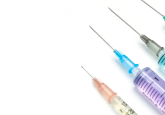Could smart watches predict heart failure?

Wearable self-recording ECG devices may now enable the prediction of heart failure risk years in advance according to a recent study published in The European Heart Journal – Digital Health.
While you may associate smart watches with their use for notification alerts, checking the weather, listening to music or measuring your heartrate, these new wearable devices can do more than your traditional Fitbit.
Heart failure is a condition in which the heart is unable to pump enough blood to meet oxygen demand. Patients with heart failure are also more likely to develop atrial fibrillation: a condition causing an irregular and unusually fast heart rate. This can lead to shortness of breath, dizziness, heart damage and an increased risk of stroke. Although there is no cure for these conditions, identifying people who are at risk of atrial fibrillation and heart failure early on would enable earlier treatment, prevention and lifestyle advice.
Wearable and mobile devices enabling ECG self-recording are one such promising diagnostic tool. Although typically benign, if additional heart beats (premature contractions) occur frequently in ECG recordings, they can be associated with atrial fibrillation (irregular heart rhythms) and heart failure. Smart watches and mobile devices have already been demonstrated to have some potential for detecting atrial fibrillation and measuring cardiac intervals. Yet current data suggests that these devices form an insufficient and weak association between premature atrial contractions on ECGs and prediction of atrial fibrillation or mortality.
In a study led by researchers at University College London (UK), wearable ECGs (15 second single lead) were utilized to measure the electrical activity and heart rhythm of approximately 83,000 patients with and without cardiovascular disease (CVD). The health of 54,016 participants was then tracked and recorded over an average of 11.5 years after the ECG recording was obtained. To independently validate these results, the remaining participants (29,324) were followed up for an average of 3.5 years after their ECG recording.
Using machine learning and an automated computer tool to identify extra heart beats (classed as either premature ventricular contractions – PVC, or premature atrial contractions – PAC), the team discovered that cardiovascular events such as developing heart failure and atrial fibrillation (irregular heart rhythms) could be predicted later on in life. The machine learning identification of extra heart beats was validated by two experts who reviewed the ECG recordings.
In participants without CVD, researchers discovered that there was a strong association between premature contractions, measured on the 15 second ECG, and a higher long-term risk of cardiovascular events in the next 10 years. After taking into account possible confounding variables such as age, hypertension and diabetes, the team discovered that participants who had a single additional PVC in their ECG recordings were twice as likely to develop heart failure as those with normal contractions, while participants with an additional PAC were twice as likely to develop atrial fibrillation in later life.
Michele Orini, Senior Research Fellow at the UCL Institute of Cardiovascular Science, commented on the study’s applications to the wider population: “Such screening could potentially be combined with the use of AI and other computer tools to quickly identify the ECGs indicating higher risk, as we did in our study, leading to a more accurate assessment of risk in the population and helping to reduce the burden of these diseases.”
Overall, the study suggests that consumer-grade (single lead) wearable devices such as smart watches could predict and help prevent future heart conditions. Although future research must validate these results and investigate how this technology would work in practice, this has huge implications for the millions of people suffering from heart conditions, as well as those who may not yet be aware. The future looks bright for wearable medical devices.





